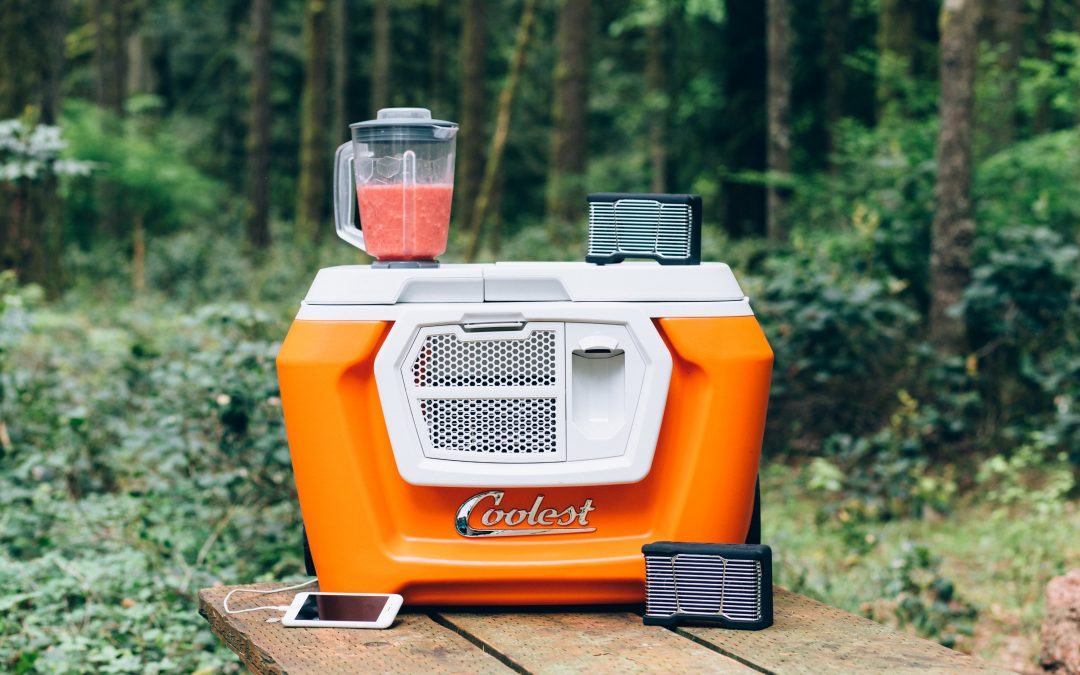Back in July 2014, I saw a Kickstarter campaign I just had to back. It was an Esky or “cooler” as they say in the US, where the company offering the product was based. But it was so much more than an Esky. It came complete with a blender, a waterproof Bluetooth speaker, a USB charger and so much more. I had visions of days at my local beach with this Esky come entertainment machine come cocktail maker. Their pitch was for ‘a portable party disguised as a cooler, bringing blended drinks, music and fun to any outdoor occasion’.
The Coolest Cooler
For a mere $250 I was not only securing one of the first ‘Coolest Coolers’, I was supporting a small Portland, Oregon based start-up while saving $155 off the retail price, when the product launched on Amazon. What could be better than that? I wasn’t alone. 62,642 others were in on the deal. Ryan Grepper, the founder of Coolest Cooler, was seeking a mere $70,000. Needless to say, Ryan was a little surprised when he woke up to find he had raised $17,000,000. The Coolest Cooler project is the second biggest Kickstarter campaign, second only to the Pebble Time smartwatch.
Now in the summer of 2017, how am I enjoying my Coolest Cooler? I’m not, because I have yet to receive it, and neither have 65% of the original backers. My July 2014 investment of $250 was meant to deliver me my shiny new Esky in February 2015, but alas, two years on I am still waiting to mix my first Coolest Cooler margarita while beers chill to the sounds of Bob Marley.
Crowdfunding fail
So what happened? A few things conspired against the company, some of their own making and some out of their control. Firstly, with so much demand, they underestimated what it would take to ramp up quickly. They also failed to accurately estimate product cost. They essentially didn’t charge enough per unit. While the first product shipped in July of 2015 and continued to ship until November that year, production then halted. At that point, there were issues with the factory, something difficult to control.
With 36,000 orders outstanding, the company announced this March that they were raising an extra $20,000,000 to manufacture and ship all remaining Kickstarter orders and support future growth. 10,000 backers took up an option to pay an extra $130 to get expedited shipping on their Coolers. And then they did the unthinkable. They started selling my Coolest Cooler on Amazon.com to fund the delivery of the remaining 26,000 outstanding orders. Disgruntled backers then headed to Amazon.com to post very negative reviews of the product, worsening the situation. While the price on Amazon.com was a lofty $600, it was still a kick in the guts for the 26,000 people who had put down $250 as a show of faith in a company at a time when the product was just a concept.
More troubling are the fewer and fewer email updates I am receiving. Initially the theme was “we’ve hit a snag, but we’ve got this”. It’s been downhill since then.
Not the norm
“Is this common with crowdfunding?” I pondered. Independent research by the Wharton School suggests it is not. Research results show:
- 9% of Kickstarter projects failed to deliver rewards
- Failure rates are consistent across categories
- Projects that raise less than $1,000 fail the most
So the Coolest Cooler experience is an outlier, especially given the sheer amount of money they managed to raise.
Given that I can buy a regular Esky, a blender, iPhone charger and speakers for a lot less than my original $250, it was that feeling of being a first-mover, of getting something cutting edge, that was the appeal. And that is sadly lost. But that’s the risk we run living at the front end of the adoption curve.





